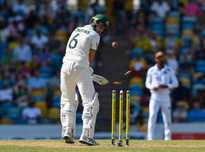That sudden dizziness, trembling, or sweating after missing a meal might not just be fatigue; it could be a sign of diabetic shock, also known as severe hypoglycaemia. This condition occurs when blood sugar levels drop dangerously low, often because of too much insulin, delayed meals, or overexertion without proper nutrition. For people living with diabetes, diabetic shock can escalate quickly, affecting the brain, heart, and overall survival if left untreated.
According to the American Diabetes Association, recognising symptoms at the earliest stage and knowing how to act can prevent serious health consequences. While mild hypoglycaemia can be corrected by eating something sweet, diabetic shock is a medical emergency that needs immediate attention. Knowing the difference between early symptoms and full-blown shock can make all the difference.
Let’s take a closer look at what diabetic shock is, its warning signs, and the practical steps you can take to recover safely and prevent future episodes.
What is diabetic shock, and why does it happen
Diabetic shock, or severe hypoglycaemia, occurs when blood glucose levels fall dangerously low, typically below 70 mg/dL. In this state, the body and brain are starved of energy, which leads to a rapid decline in physical and mental function. The most common causes are miscalculating insulin dosage, skipping meals, engaging in intense exercise without eating enough, or drinking alcohol without food.
Unlike ordinary tiredness or weakness, this drop in blood sugar happens suddenly and can progress within minutes. The body tries to signal the emergency through symptoms, and if ignored, it can spiral into unconsciousness or seizures.
Early warning signs of diabetic shock
Spotting the initial signals quickly is crucial. Look out for:
- Trembling or shaky hands
- Sudden sweating
- Strong hunger pangs
- Headaches or dizziness
- Blurred vision
- Mood changes like irritability or anxiety
- Difficulty concentrating or confusion
If these signs are ignored, they may worsen into slurred speech, seizures, fainting, or even coma.
What to do during diabetic shock
Immediate action can save a life. Here’s what experts recommend:
- Follow the 15-15 rule: Consume 15 grams of fast-acting carbs (juice, glucose tablets, honey) and recheck blood sugar after 15 minutes.
- Repeat if needed: If levels remain low, take another 15 grams.
- Don’t give food to someone unconscious: The Risk of choking is high.
- Use glucagon injection if available: This raises blood sugar quickly.
- Call emergency services immediately if the person is unresponsive, seizing, or not improving.
Preventing diabetic shock in daily life
Prevention largely depends on consistency and awareness. Eating meals on time is non-negotiable for people managing diabetes. Blood sugar monitoring before and after exercise can also help identify risks early, especially for those with active lifestyles. Careful adjustment of insulin or oral medication under medical supervision is another key preventive step.
Lifestyle habits matter too. Drinking alcohol without food raises the chances of hypoglycaemia, so pairing drinks with snacks or meals can help. Many people with diabetes also find it useful to carry emergency supplies such as glucose tablets, biscuits, or juice boxes. These small habits can provide immediate relief in unexpected situations and reduce the risk of diabetic shock.
When to seek medical help for diabetic shock
Despite best efforts, there are times when professional care is necessary. If blood sugar levels don’t improve after corrective steps or if symptoms worsen to seizures, fainting, or loss of consciousness, urgent medical attention is vital. Repeated episodes of severe hypoglycaemia should also be discussed with a doctor to adjust treatment plans.
Long-term complications of uncontrolled hypoglycaemia can include increased risk of cardiovascular disease, neurological damage, and in severe cases, coma. Early intervention not only saves lives but also helps avoid these long-term health issues.
Diabetic shock is a serious but preventable condition. By recognising early signs, acting quickly with corrective measures, and maintaining consistent daily habits, people with diabetes can manage their blood sugar more safely.
Staying informed and prepared is the strongest defence against this potentially life-threatening episode.
Also read| 3 symptoms that often appear 24 hours before death

 Patience Urged for Australia's Rebuilt Top Order Amidst Test Transition
Patience Urged for Australia's Rebuilt Top Order Amidst Test Transition
 Kohli's Composure Under Pressure: Sharma Credits Mental Fortitude for Key Innings
Kohli's Composure Under Pressure: Sharma Credits Mental Fortitude for Key Innings
 West Indies Coach Daren Sammy Fined, Reprimanded for Umpire Criticism
West Indies Coach Daren Sammy Fined, Reprimanded for Umpire Criticism
 Bangladesh Coach Phil Simmons Leaves Sri Lanka Tour for Medical Check-up in London
Bangladesh Coach Phil Simmons Leaves Sri Lanka Tour for Medical Check-up in London
 Rishabh Pant: Greg Chappell Hails India Star as Cricket Revolutionary
Rishabh Pant: Greg Chappell Hails India Star as Cricket Revolutionary
 Pant's Fearless Hitting vs. England Draws Adam Gilchrist Comparisons From Greg Chappell
Pant's Fearless Hitting vs. England Draws Adam Gilchrist Comparisons From Greg Chappell
 IND vs ENG, 2nd Test: Rishabh Pant's Composed Reply Silences Harry Brook's Sledge About Fastest Century
IND vs ENG, 2nd Test: Rishabh Pant's Composed Reply Silences Harry Brook's Sledge About Fastest Century
 Neeraj Chopra Tips Jasprit Bumrah for Javelin Success, Cites Cricketer's Strength and Fitness
Neeraj Chopra Tips Jasprit Bumrah for Javelin Success, Cites Cricketer's Strength and Fitness
 Gambhir Backs India's Lower Order Despite Headingley Test Collapse, Cites Costly Dropped Catches
Gambhir Backs India's Lower Order Despite Headingley Test Collapse, Cites Costly Dropped Catches
 Carlsen on Gukesh's World Champion Status: 'Impressing Me Still a Question'
Carlsen on Gukesh's World Champion Status: 'Impressing Me Still a Question'